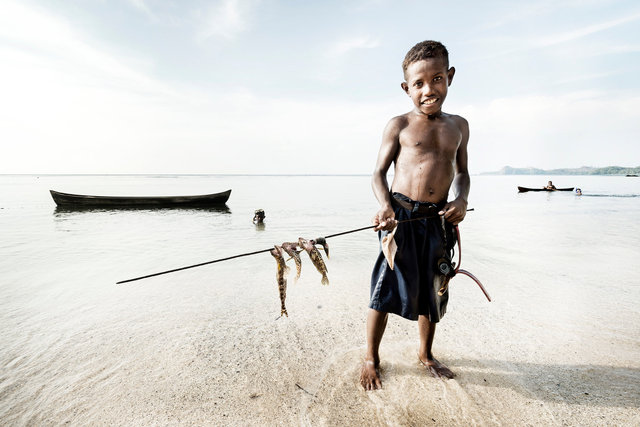
Boys with strong lungs free dive for fish with sharpened spikes. As coastal erosion results in a loss of fish and marine food, their parents have to paddle further and further to catch fish and crab.
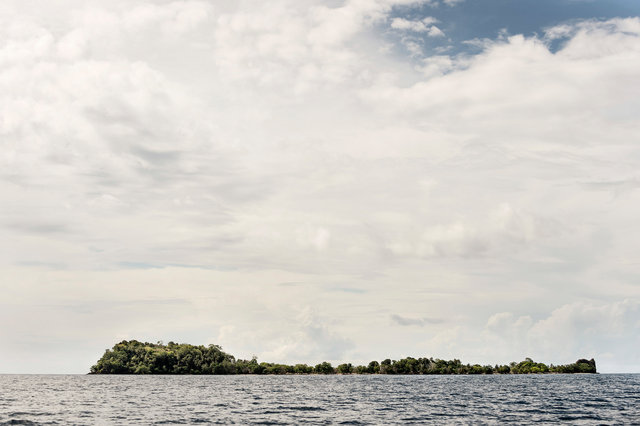
Naghothano is home to about 600 people living in the low-lying area of the island. The changing weather pattern leads to stronger cyclones, storm surges and uncommonly high king tides during which the villagers seek shelter in the more hilly areas. Meanwhile, their homes suffer extensive flooding.
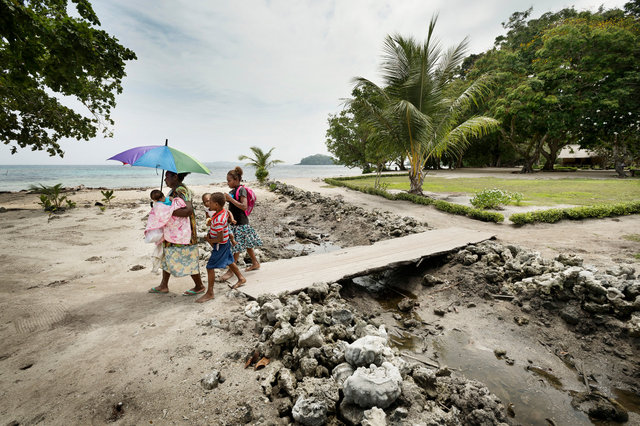
The village suffers from extensive flooding with every high tide, leaving the land unsuitable for food gardens. Families had to relocate their homes inland from the areas most affected.
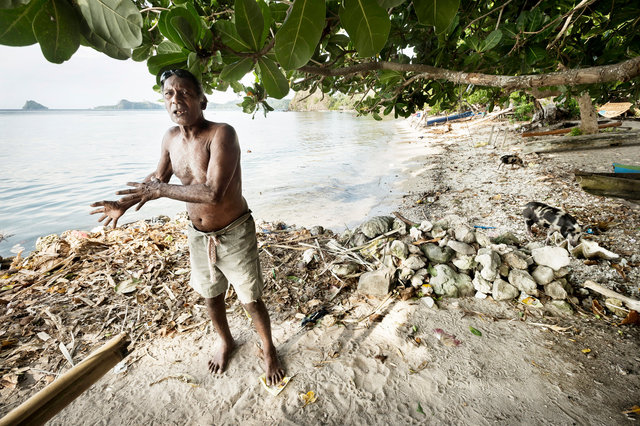
The villagers trying to beat the sea with sticks and stones, to stop coastal erosion with do-it-yourself walls.
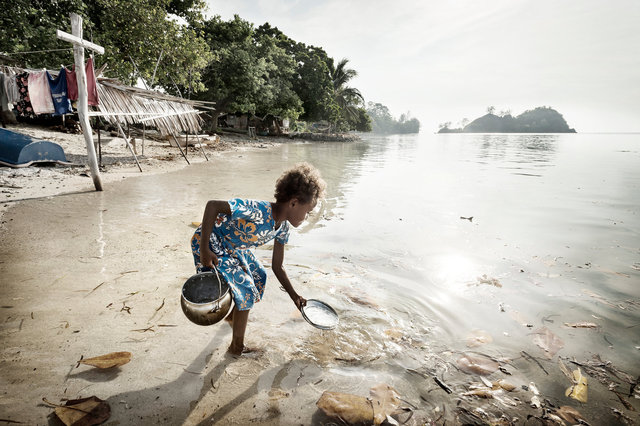
Girls are doing the dishes in the evening - the undemanding pastoral life is captivating.
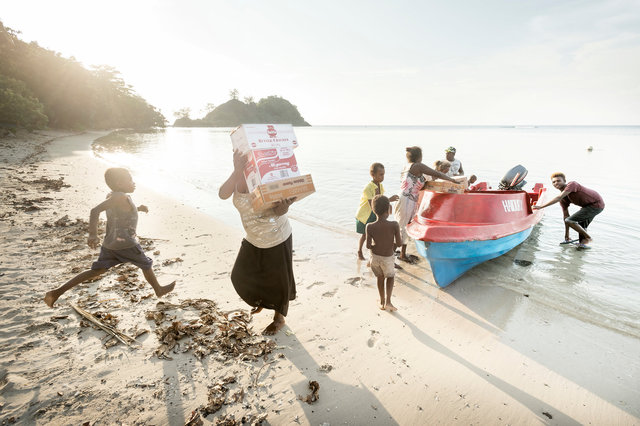
The fish catch is sold in Honiara, about 80 kilometers from Naghotano. The incomings are used to buy food supplies, such as noodles and crackers.

Groundwater salinization is killing off plants and trees. The island has no freshwater sources and the people return daily to the mainland to tend to their subsistence crops.
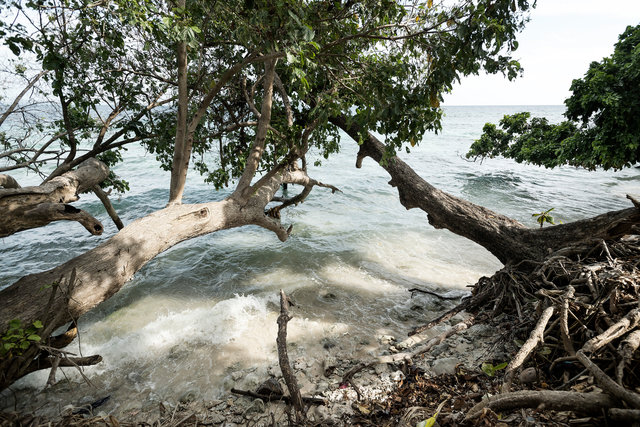
Rising sea levels are chewing away at Naghothano and causing increasingly unstable shorelines. Trees, once on solid ground, are now falling into the sea. “The island used to have a large shoreline with many trees.” With the trees being washed away the village becomes even more vulnerable to storm surges and high tides.
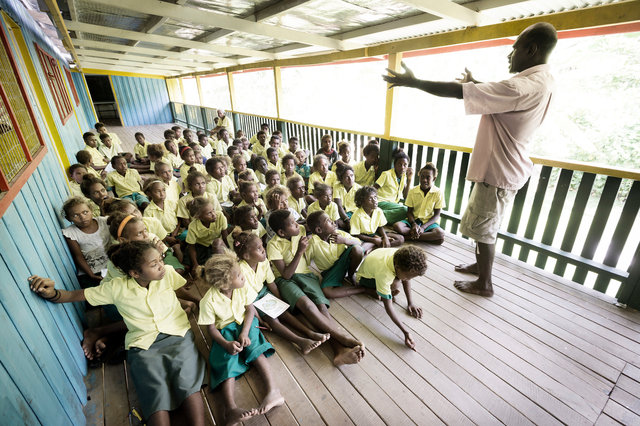
Educating the future generation on the impact of climate change is essential for the survivor of the community.
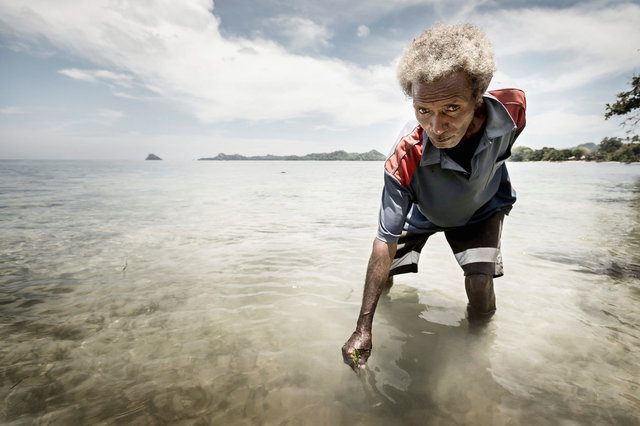
"For me this is my home. I plant mangroves because I want to stay." The dense root system of the mangrove helps stabilizing the coastline and prevents erosion from waves and storms.
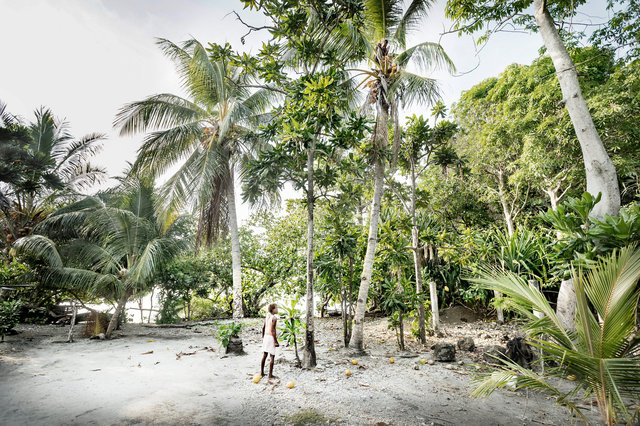
Harvesting coconuts on the island. Other traditional island staples are bananas and mangos.
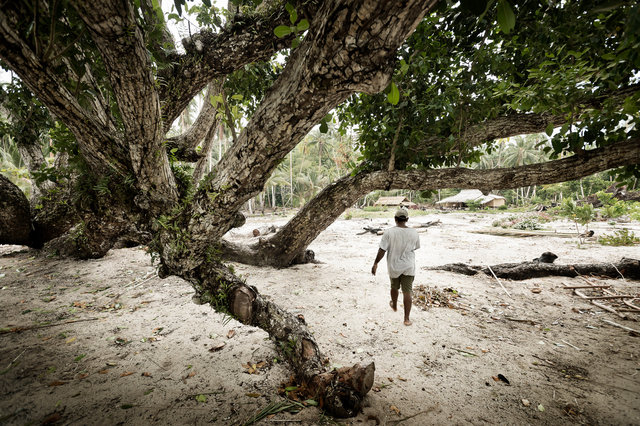
En route to food gardens, situated on the mainland.
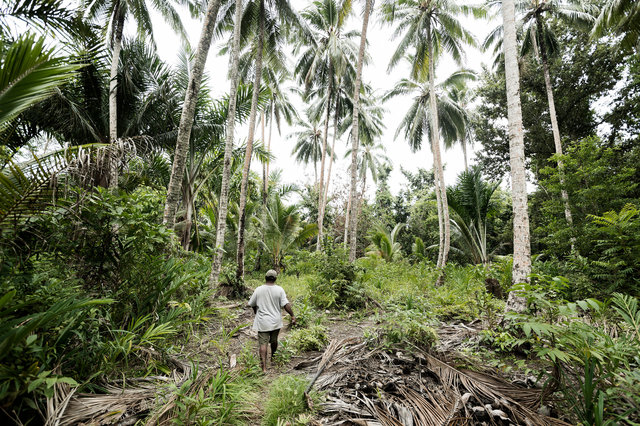
En route to food gardens, situated on the mainland.
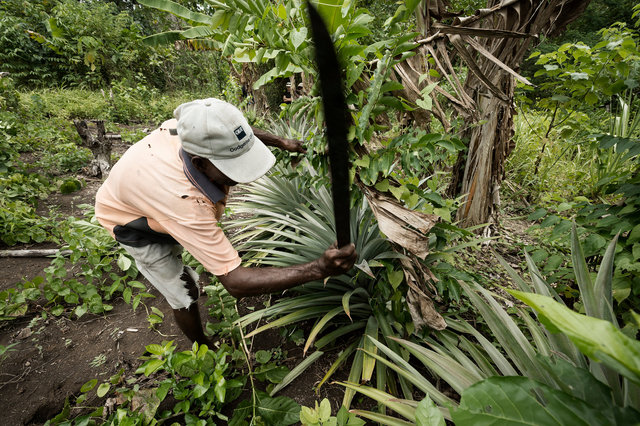
As Naghothano has no freshwater sources, food gardens are located on the ‘mainland’ where the villager’s tend to their crops daily. Traditional island staples have been lost to changing wheatear patterns. “Food don’t grow good because of more sun and more rain coming at the wrong time.”
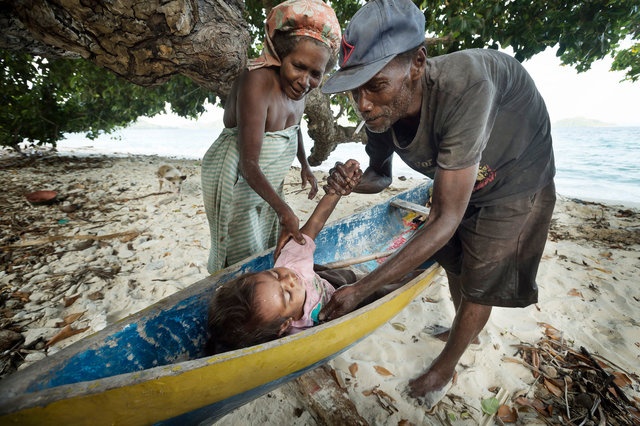
After a day of hard work on the mainland, one- hour paddle away from Naghotano.
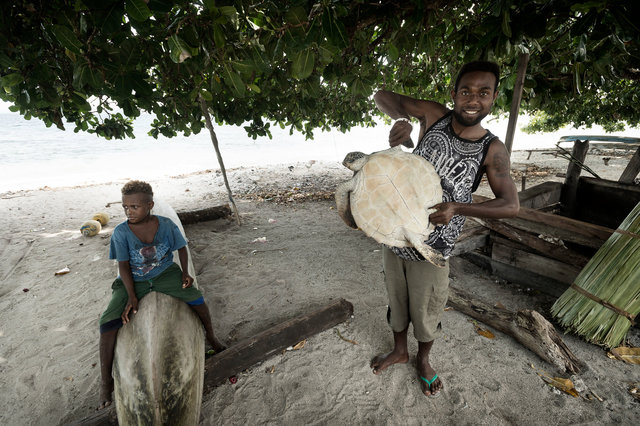
While generally forbidden, the islanders are permitted to catch sea turtles for own consumption. As higher ocean temperatures damage coral reefs and cause changes to fish migration patterns, the people’s traditional foods source, fish, is diminishing. “Some fish and seashells now are not as big or not there anymore. Our main food is fish.”
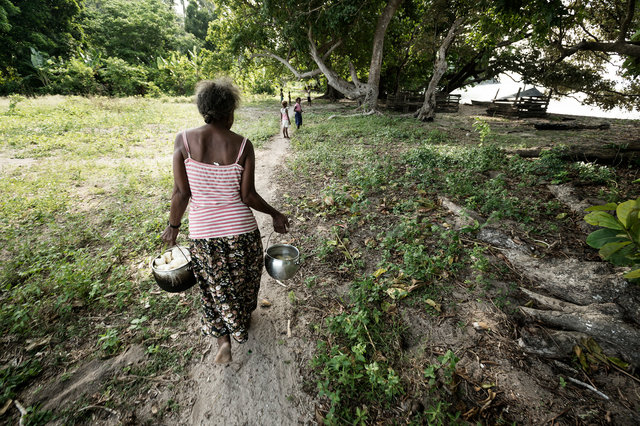
On her way to fead the pigs.
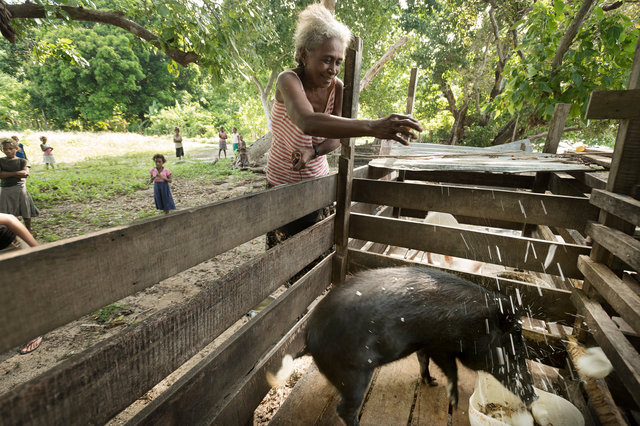
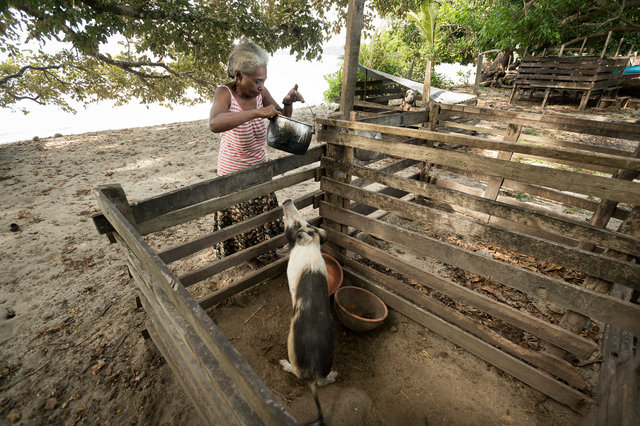
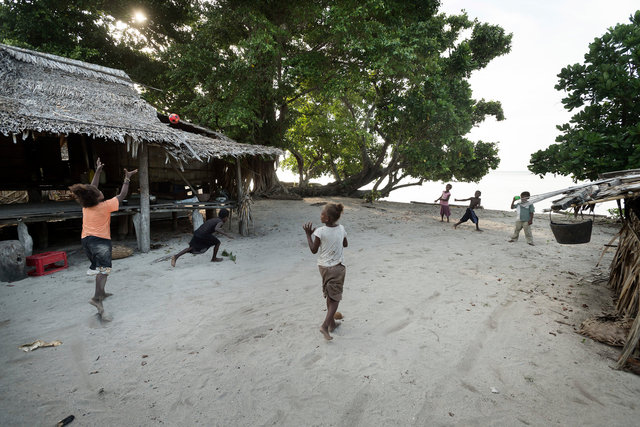
Kids playing in the slightly cooler evenings.
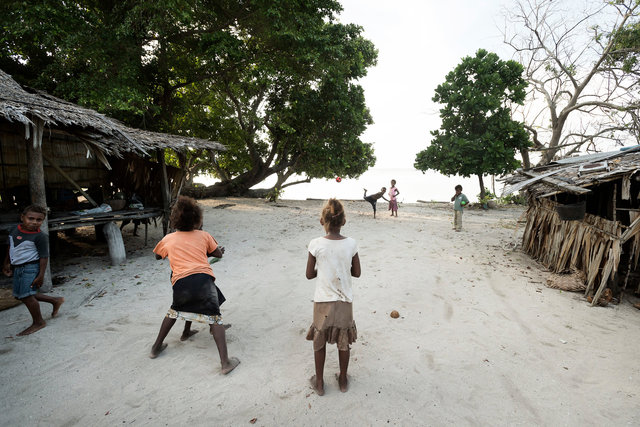
Kids playing in the slightly cooler evenings.
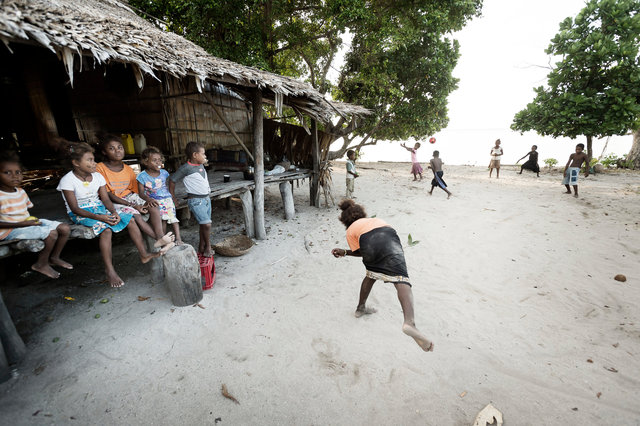
Kids playing in the slightly cooler evenings.
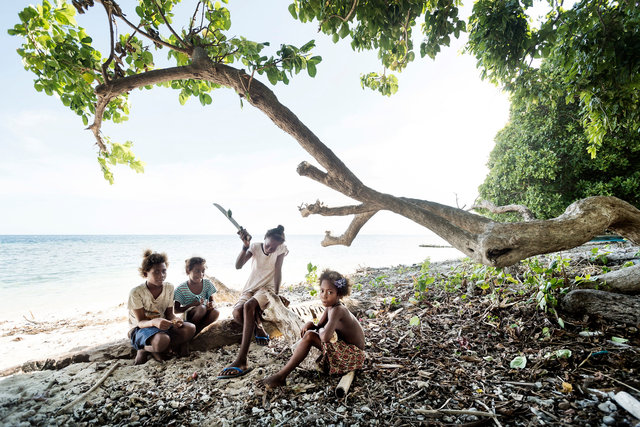
Girls chatting and cracking nuts with a machete in the shade after school.
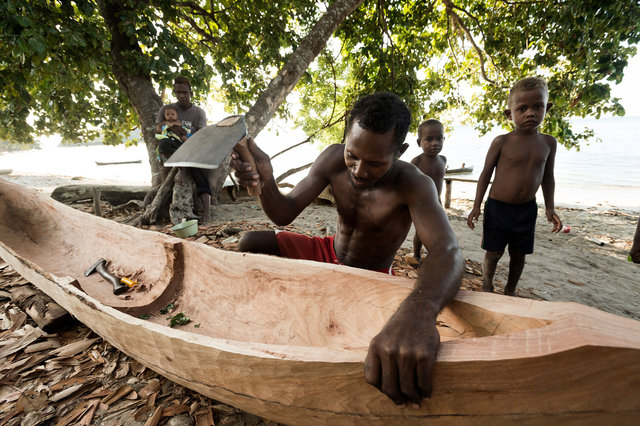
Dugout canoes are being carved skillfully and remain the primary mean of travelling for the villagers.

The rising sea threatens the graves - the village cemetery is at danger of being washed away.
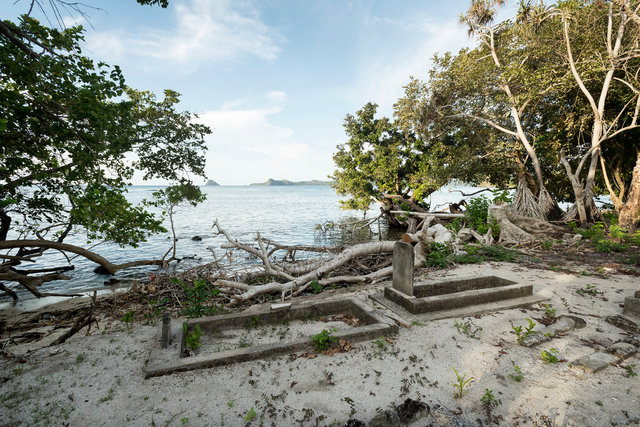
The village cemetery used to be located inland, but with the sea now encroaching on the site graves are threatened to be washed away.